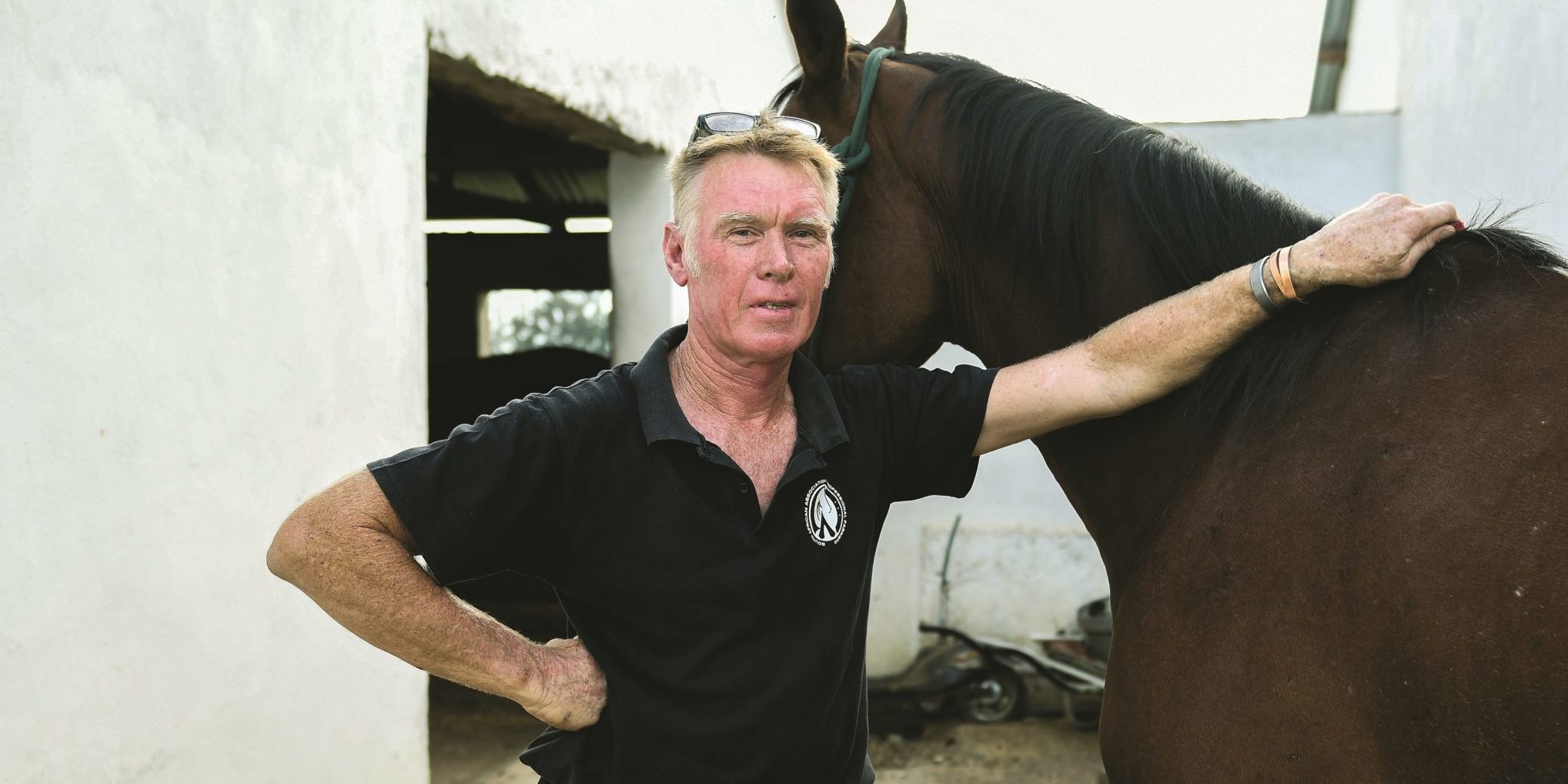About 81 kilometers from Africa’s richest square mile and the concrete jungle that is Sandton, we are on a gravel road that stretches as far as the eyes can see.
It’s a Wednesday afternoon and around us, on this stretch in the tiny town of Meyerton in South Africa, is nothing but dry earth and rolling vistas, until we come upon a signpost that says Rooijakkals Street – it’s an indication we are not lost.
Up further on the rocky road, in the distance, we see a horse. It’s the first tell-tale sign of our destination.
Past an open gate and another electric wired-fence with a gate, we approach the single-storied home of Scott Borland, an entrepreneur and professional farrier, in other words, a smith who shoes horses.
At the door, a lady, his wife, dressed in black, emerges, followed by at least a dozen dogs.
But we are here for the horses.
READ MORE: The South African Horse Industry: A Potential Billion Rand Market
Borland welcomes us – as we gingerly sidestep the scary canines – and shows us to the four horses in his stable. He says he has been looking after them ever since his children went overseas leaving them in his care.
Borland has been working from home for the last 15 to 20 years, he tries to recall, as we share a bench outside the stable not far from his work truck on the farm.
The gentle afternoon breeze fans his memories.
In 1981, he started his apprenticeship at the Newmarket Farrier School in Alberton, south of Johannesburg. The school shut down 15 years ago because there was suddenly a glut of farriers in the market and not enough jobs.
“I have been around horses all my life,” says Borland, “when I left school, it was a natural progression to move on to the horse industry and that’s how I took up my apprenticeship.”

Borland demonstrates the process of shoeing a horse. Photo by Motlabana Monnakgotla.
Horseshoes are metal-fabricated products attached to horse hooves to prevent hoof wear and injuries to the foot. The shoes keep the horses balanced and their feet maintained.
Professional farriers need to be skilled, so Borland has also trained apprentices, been on the South African farrier team representing the country in Canada, and has also shoed horses in Scotland, Turkey and America.
“Horseshoes are probably one of the things that changed the history of the planet,” Borland says grandly, going back in time to when horses were the prime mode of transport.
“There was a man called Henry Burden. He was a Scotsman who moved to New York before the start of the American Civil War, he was an engineer and developed the first machine to mass produce horseshoes in 1835. That machine can produce a shoe per second,” says Borland, with an intent look in his eyes.
He then references the Boer War in South Africa from 1899 to 1902. The reason the Boers used to blow up trains or hijack them were to steal horseshoes from the British, he says.
“The horse industry had about 300 registered farriers in South Africa and a number of unregistered ones as well,” says Borland.
Today, it’s a specialized skill.
Horseshoes are made of different metals: steel – for work, aluminium – for performance, and plastic – for negotiating slippery surfaces.
Borland’s customers are mainly private clients who own horses for both pleasure riding and competition. He also shoes the horses used by the Johannesburg Metropolitan Police Department (JMPD) who have been his clients for the last 25 years.
Is it a lucrative profession to be in, I ask.
“A partner and I have recently started a horseshoe manufacturing plant on this very farm and it’s the only horseshoe manufacturing in the southern hemisphere; prior to that, all horseshoes were imported, so there isn’t really any revenue for the country out of it,” offers Borland; the only other countries producing horseshoes are India, China and Europe.
Borland and his partner started their business, Mustang Horse Shoes, in 2013, producing horseshoes locally and employing three people. They had to mostly learn by trial and error as there was no existing frame of reference for them in South Africa.
A fact they are proud of about the business is that they also sell their products in the coal yards based in the townships. This is where horses are used to pull carriages filled with coal, going street to street selling or delivering it.

In early times, Horseshoes were initially cast from iron and bronze, were synonymous with good fortune, and even used as talismans. Photo by Motlabana Monnakgotla.
“Ninety percent of those shoes are our shoes. We make a very good shoe for their type of work. It’s a hard shoe and provides a lot of grip; most of these horses work on tar,” says Borland.
Mustang Horse Shoes uses rolled mild steel, produces its own plastic and will be using aluminium for its horseshoes.
The company services about 400 horses a month and makes a little over $8,000. The prices for shoeing horses range from $50 to $400 depending on the area and the type of horses they visit. Their business model is a mobile workshop, as they travel to the clients.
“We try to keep our traveling distance down to an 80km radius every day; we probably do 20 horses a day, depending on how far we are traveling,” says Borland.
I have never seen the process of shoeing a horse, except in the American cowboy movies I watched as a youngster, but Borland was surely able to throw more light on his unusual skill.
But now, each time I hear the clip-clop sounds of the JMPD horses, I know them to be of the horseshoes made by a humble farrier on a farm far from the sights and sounds of Johannesburg.
